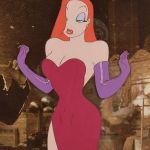
The Most Iconic Femme Fatale in Cinema
On the occasion of the Venice Film Festival, let's talk about the seventh art... more or less
August 30th, 2024
When it comes to cinematic archetypes, the femme fatale never goes unnoticed. Often seen in literature and noir films, the femme fatale appears as a seductive and manipulative figure, usually portrayed as a villain or anti-heroine who uses her power to get what she wants. Since the primitive times seen in the biblical character of Delilah, between the 19th and 20th centuries in the works of the likes of Oscar Wilde, and with the rise of noir, crime and drama productions in the 1940s, the charm of the femme fatale remains intact to this day. With the popularization of "cores" on social networks like TikTok, the femme fatale archetype has moved into the aesthetic realm, and an spiritual one too, with netizens calling it dark feminine energy and various content creators such as Tam Kaur and awwlexis explaining how to channel your inner femme fatale. Given its ongoing popularity in the mainstream culture, let's revisit the most iconic femme fatales in cinema history.
Kitty Collins — The Killers (1946)
In the American film noir The Killers, directed by Robert Siodmak, actress Ava Gardner's character is widely regarded as the pioneer of femme fatales in films. The story follows two men who murdered a gas station attendant while the investigator Reardon pursues the case against the orders of his boss. In the process, he delves into the victim's life and finds a complicated series of lies and crimes, all connected to the stunning and enigmatic Kitty Collins. Considered a critical success, gaining four Academy Award nominations, the production also started the fascination with the femme fatale in cinema.
Madeleine Elster — Vertigo (1958)
Alfred Hitchcock's acclaimed psychological thriller Vertigo, based on the 1954 novel D'entre les morts from Boileau-Narcejac, combines suspense, tension, and the idea that we might have a second life—although that's open to interpretation. In San Francisco, a recently retired policeman John "Scottie" Ferguson is hired by a long-time colleague to spy on his mysterious and elegant wife, Madeleine Elster, who her husband is worried about and believes is a danger to herself due to possession beliefs – by the ghost of Madeleine's distant great-grandmother, Carlotta Valdes, who killed herself – and mental instability. Spy, Scottie does. But as he follows Madeleine's every move, a growing obsession with her begins to form.
Jessica Rabbit — Who Framed Roger Rabbit (1988)

In Robert Zemeckis' fantasy comedy Who Framed Roger Rabbit, live characters coexist with animated ones in a 1947 Hollywood. When a cartoon rabbit named Roger becomes the prime suspect in the murder of Acme Company and Toon Town owner after discovering that his wife, Jessica Rabbit, has been having an affair with him, he turns to a cartoon-hating detective to help him prove his innocence. Although this femme fatale is an animation, she has not been less influential. Being a memorable Halloween costume – seen on celebrities such as model Alessandra Ambrosio, actress Madelaine Petch, and model Heidi Klum –, Jessica Rabbit has emerged as one of cinema's most distinctive femme fatales.
Batman Returns - Selina Kyle AKA Catwoman (1992)
In Tim Burton's Hero production, actress Michelle Pfeiffer stars as Selina Kyle – i.e. Catwoman. The movie focuses on the superhero Batman's efforts to defeat Penguin's corrupt plans to win the Gotham people's trust. But his mission is complicated by the seductive and dangerous Catwoman. A remarkable role throughout Pfeiffer's career, Catwoman has also become a popular Halloween costume – seen on model Bella Hadid, for instance, and considered by many to be the definitive femme fatale look.
Mia Wallace — Pulp Fiction (1994)
Widely regarded as Quentin Tarantino's masterpiece, Pulp Fiction remains an enduring cult classic. Starring John Travolta, Samuel L. Jackson, Bruce Willis, and Uma Thurman, the film follows four stories of crime and violence in Los Angeles. The actress's character, Mia Wallace, was her breakthrough role, earning her an Academy Award nomination for Best Supporting Actress. Thurman's character also became a cultural icon, as she danced to Chuck Berry's ''You Can Never Tell'' and commanded the film's promo materials. With her appearance meant to emulate a femme fatale, Mia Wallace has become a popular figure associated with the archetype.
Poison Ivy — Batman and Robin (1997)
In Joel Schumacher's Batman and Robin, Uma Thurman is once again the femme fatale, this time as the seductive villainess Poison Ivy, who plans to freeze Gotham City and destroy its population with Mister Cold.
Kathryn Merteuil — Cruel Intentions (1999)
In Roger Kumble's teen romance drama Cruel Intentions - starring Sarah Michelle Gellar, Ryan Phillippe and Reese Witherspoon - Sebastian, and Kathryn are two manipulative half-brothers at an exclusive Manhattan school who make a bet to seduce the new principal's innocent daughter – together with lots of scheming.
Jennifer Check — Jennifer’s Body (2009)
Karyn Kusama's horror comedy, Jennifer's Body, stars Megan Fox as a newly possessed high school cheerleader who has developed a taste for killing her male classmates. Her best friend, played by Amanda Seyfried, is determined to stop her before it all gets to her boyfriend, Chip. As one of Fox's most famous roles, Jennifer has become the inspiration for many costumes and a key symbol of the femme fatale in movies too.
Amy Dunne — Gone Girl (2014)
Widely known for her iconic cool girl monologue, Amy Dunne has received many supporters in recent years. In David Fincher's Gone Girl, she disappears during her and her husband Nick's wedding anniversary. Under pressure from the police and the intense focus of the media, Nick struggles to convince people that he did not murder his wife. But as the couple's problems, his own lies, and general manner unfold, everyone wonders: is Nick lying? Or is there more to it than that?

















































































